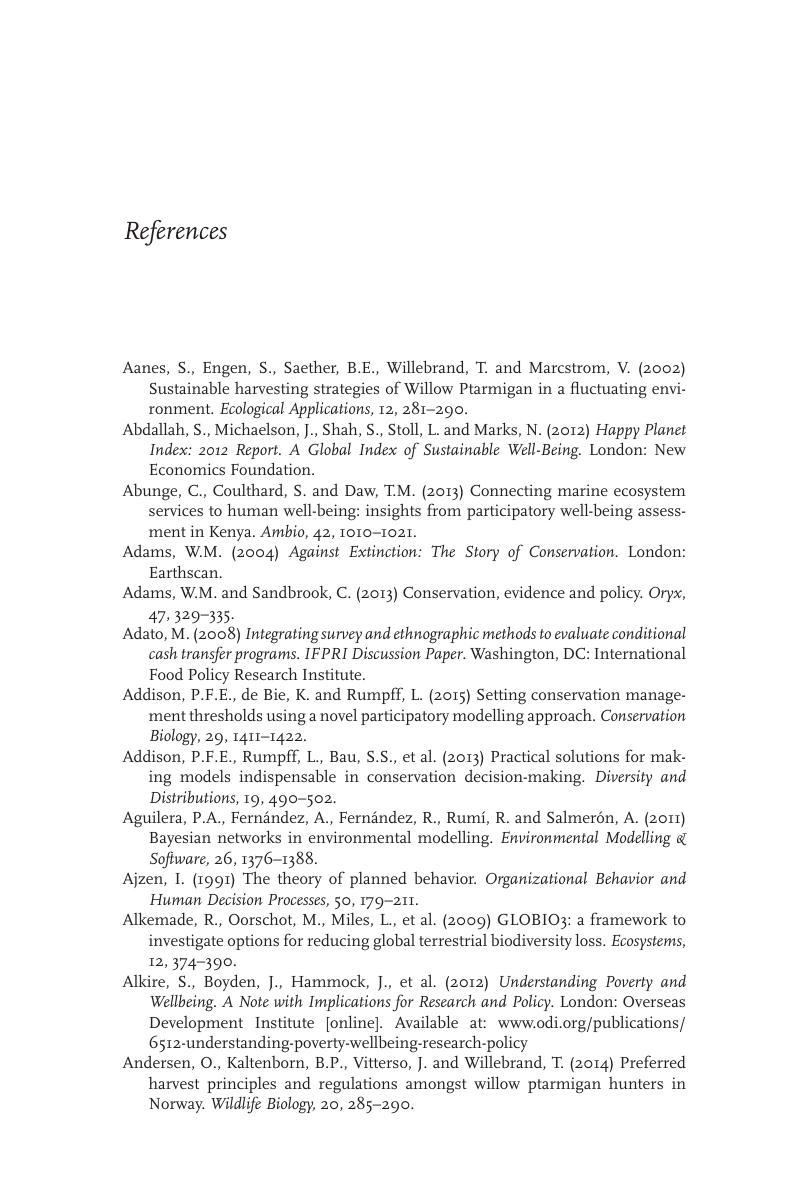 Decision-Making in Conservation and Natural Resource Management
Decision-Making in Conservation and Natural Resource Management Book contents
- Decision-Making in Conservation and Natural Resource Management
- Conservation Biology
- Decision-Making in Conservation and Natural Resource Management
- Copyright page
- Dedication
- Contents
- Contributors
- Acknowledgements
- 1 Introduction
- Part I Approaches to Decision-Making
- Part II Challenges in Implementation
- References
- Index
- References
References
Published online by Cambridge University Press: 22 June 2017
- Decision-Making in Conservation and Natural Resource Management
- Conservation Biology
- Decision-Making in Conservation and Natural Resource Management
- Copyright page
- Dedication
- Contents
- Contributors
- Acknowledgements
- 1 Introduction
- Part I Approaches to Decision-Making
- Part II Challenges in Implementation
- References
- Index
- References
Summary

- Type
- Chapter
- Information
- Decision-Making in Conservation and Natural Resource ManagementModels for Interdisciplinary Approaches, pp. 235 - 268Publisher: Cambridge University PressPrint publication year: 2017


